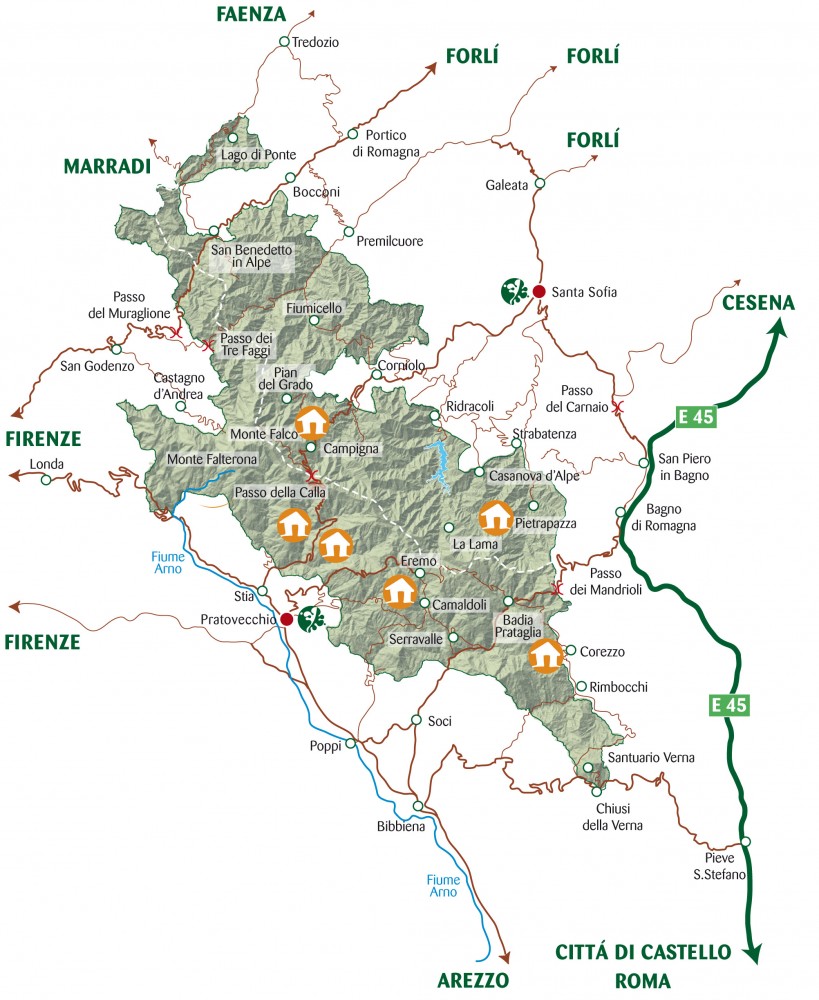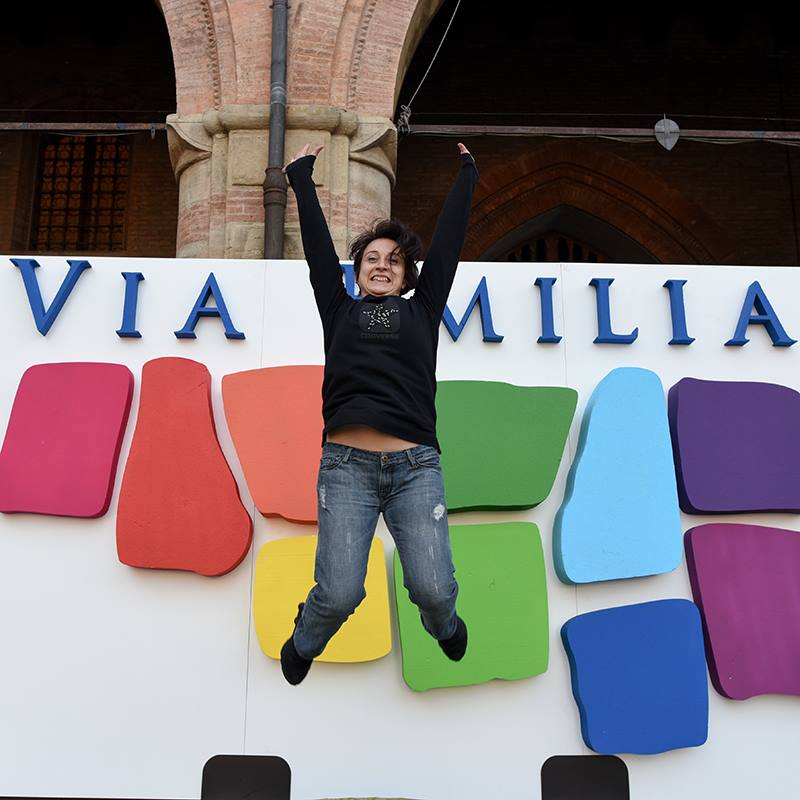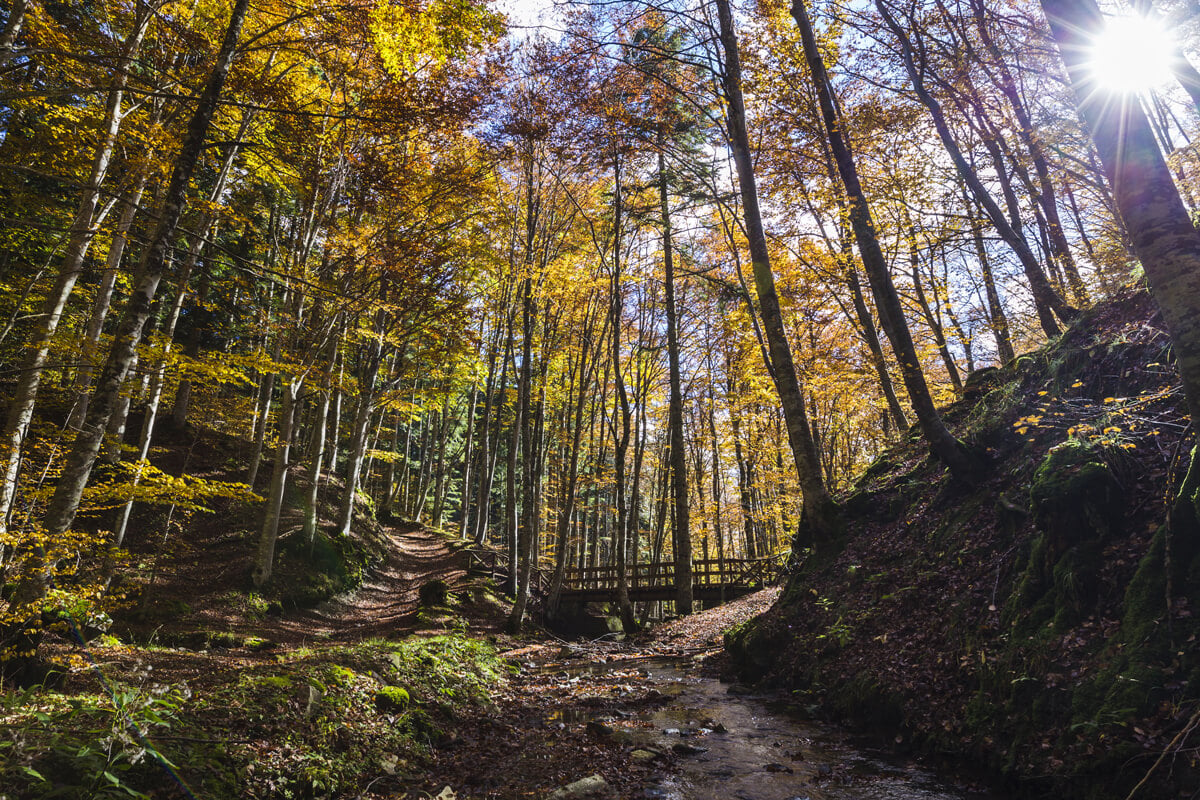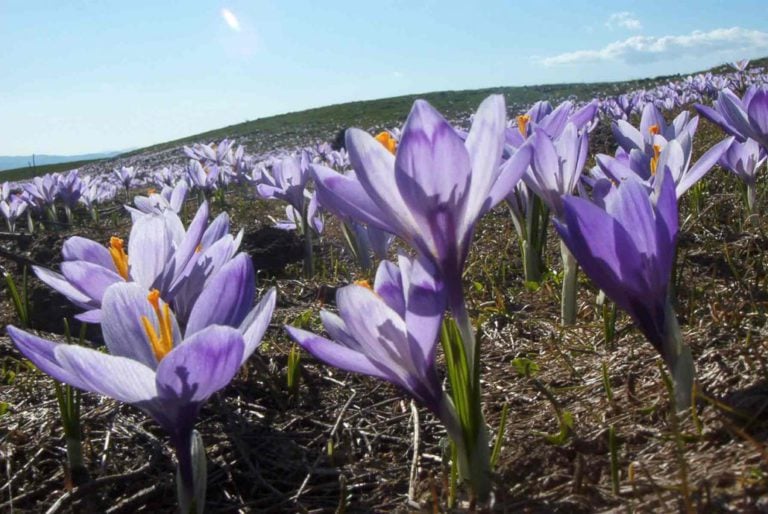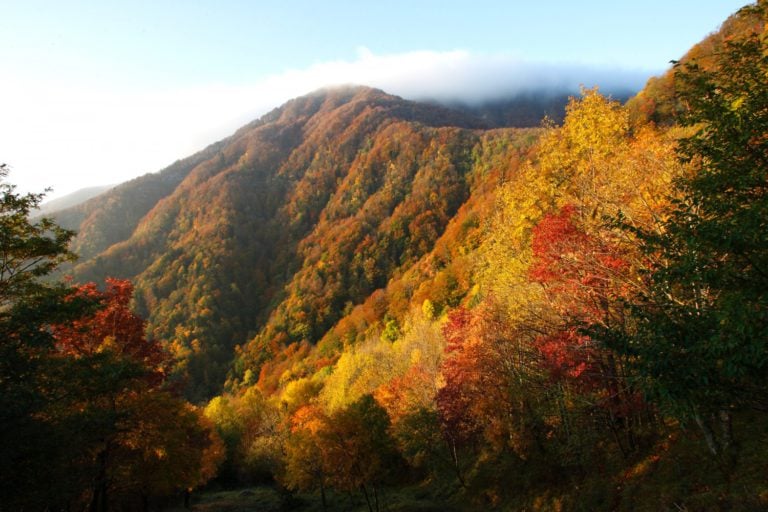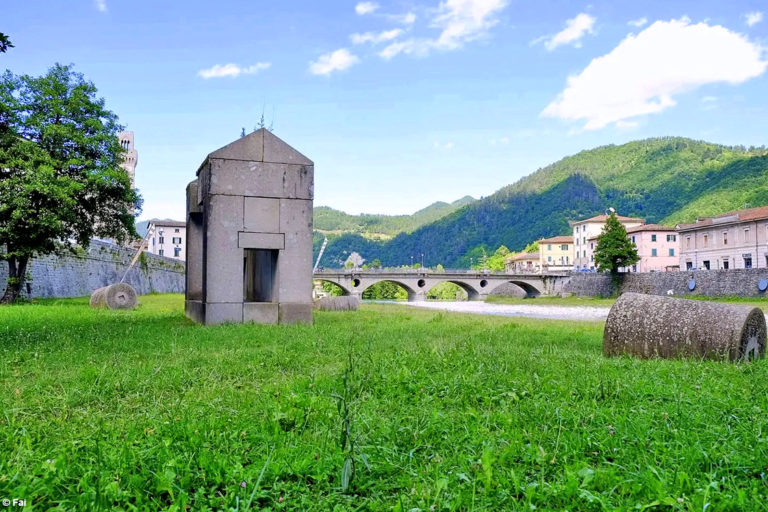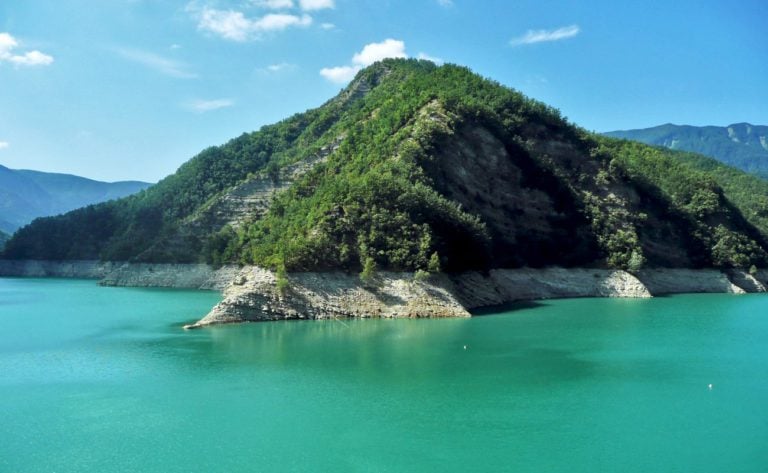Today we’re delighted to present six unique ideas for discovering Emilia Romagna’s first national park, the Casentino Forests. Like the Apennine Park of Tuscany-Emilia, this stunning park extends into Tuscany, allowing us to share it with our neighbouring region.
Created in 1993, the park covers five municipalities in the province of Forlì-Cesena: Bagno di Romagna, Santa Sofia, Premilcuore, Portico – San Benedetto and Tredozio.
Here are our six all-year-round ideas for experiencing the Park from every angle and for every interest. Whether you’re drawn to gnome villages, thermal baths, scenic peaks or modern art, we’ve got something for everyone – including the stunning autumn foliage, the Ridracoli dam and the Dante-inspired Portico di Romagna.
Follow us — you won’t regret it!
Bagno di Romagna, for young and old
If you’re looking for a destination that’s perfect for both children and adults, Bagno di Romagna is the place to be!
Start with the Sentiero degli gnomi, an enchanting 2-kilometre loop that will take you into a magical world where you’ll feel like a child again. Starting from the town’s public gardens and crossing the bridge over the Savio river, the path takes you into a forest full of stone sculptures, animal silhouettes, whimsical wooden houses and signs with illustrations and fairy tales.
Afterwards, treat yourself to pure relaxation in the warm thermal waters known since Roman times. Choose from three modern spa resorts (Hotel delle Terme Santa Agnese, Ròseo Euroterme Wellness Resort, Grand Hotel Terme Roseo) and enjoy a range of wellness and therapeutic treatments.
As the seasons change, why not indulge in a little extra pampering to help you feel your best?
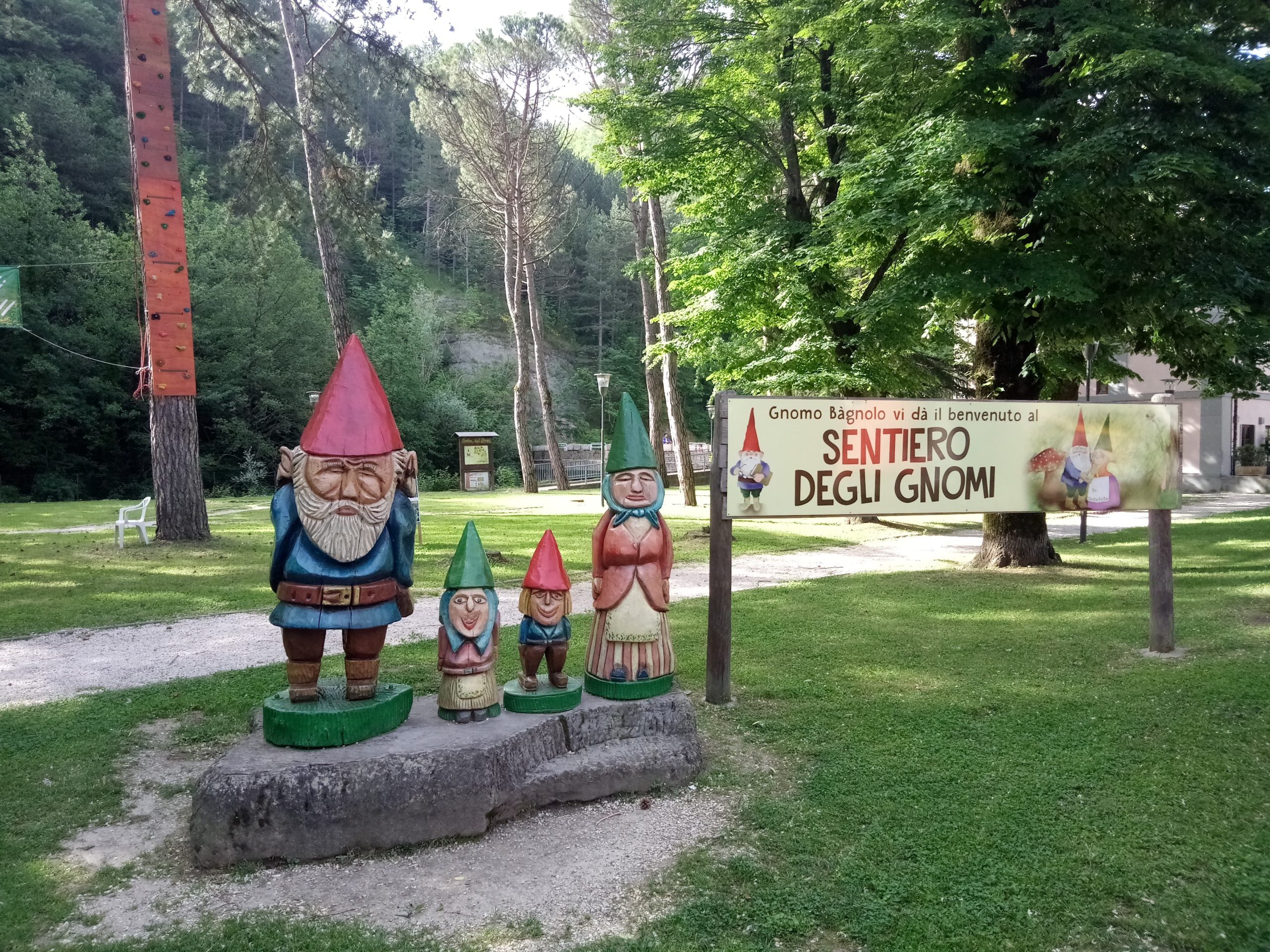
The Ridracoli Lake and Dam
Built in the late 1970s and early 1980s, this lake and its dam are a must for anyone exploring the area. There are many ways to enjoy it!
Take the easy Sentiero Natura trail up to the Cà di Sopra refuge or have a picnic by the lake from spring to autumn. In spring and summer, don’t miss the chance to explore the lake by electric boat or, for the more adventurous, by kayak.
The Ridracoli Water Museum is open all year round and, as you’d expect, celebrates the fascinating world of water. You can also watch the dam in real time on two live webcams.
Fun fact: did you know that the dam supplies water to the inhabitants of the provinces of Forlì-Cesena, Ravenna and Rimini – and even the neighbouring country of San Marino?
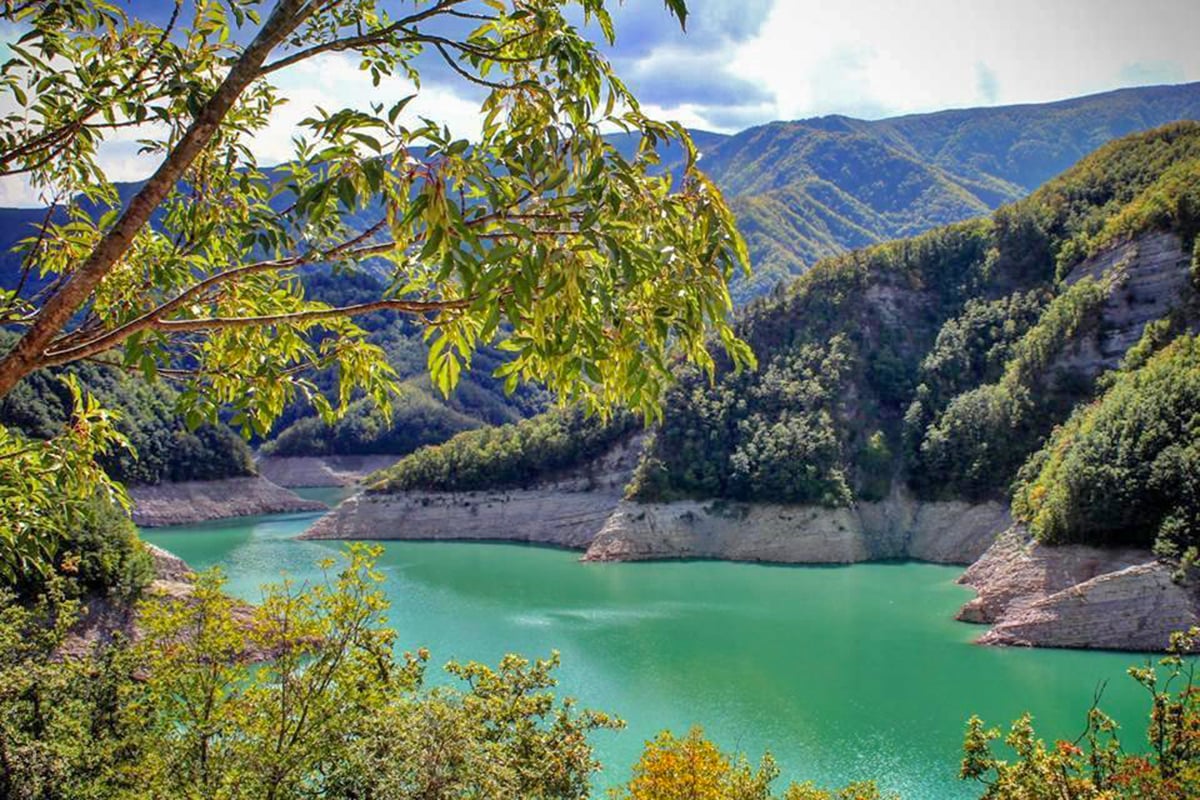
Fall Foliage
In autumn, nature offers us one of its most breathtaking spectacles: for a few weeks, the woods are transformed into vibrant shades of green, red, yellow and orange. One of the best places to experience this colourful spectacle is the Campigna forest, where you can follow a looping path from the village up to the Passo della Calla via the Granducale mule track, then descend to Villaneta along the Fonte del Raggio path.
Thanks to the unique position of the Tuscan-Romagnolo Apennines, between the Mediterranean and European climates, the forests here boast an extraordinary variety of plant species, earning them the title of the most colourful forests in Italy.
Discover more itineraries to explore the park on foot at trekking.parcoforestecasentinesi.it and check the Autunno Slow calendar for organised excursions.
Best time to visit: the last two weeks of October and the first two weeks of November.
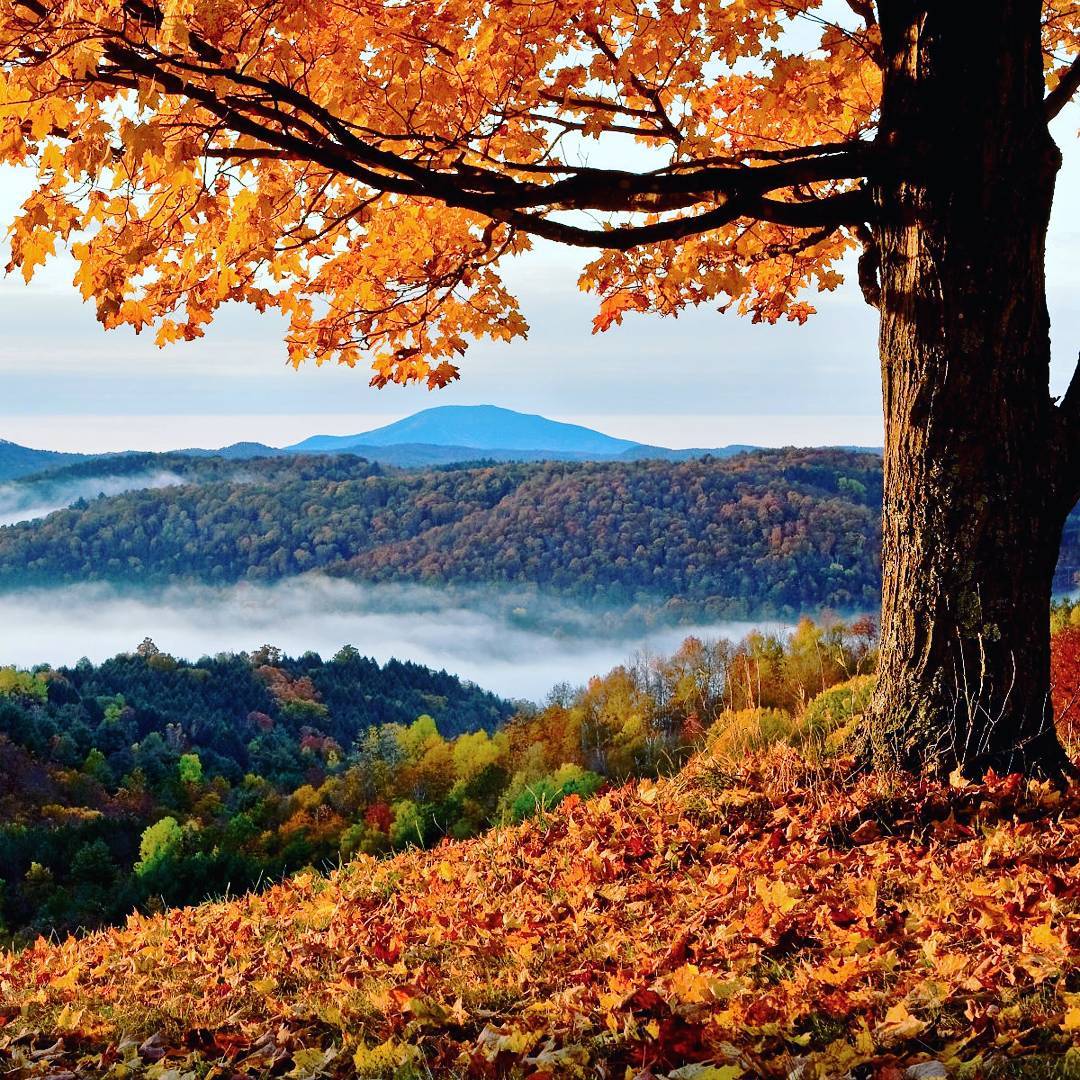
Modern Art in Santa Sofia
Not everyone knows that the small village of Santa Sofia, on the banks of the river Bidente and part of the Romagna Forlivese Consortium, is a hidden gem for lovers of modern art. The Vero Stoppioni Gallery of Modern Art, founded in 1990, exhibits works from the various editions of the Premio Campigna.
The gallery houses an impressive collection of Italian art movements from the 1950s to the present day: from realism and abstraction to pop art, metaphysical representation and contemporary figurative art. Special attention is given to Mattia Moreni (1920-1999), described by the art historian Renato Barilli as “the most restless and dynamic of our masters”, who maintained a unique bond with Santa Sofia and its surroundings.
The gallery is generally open on Sundays (9.30 – 12.30 and 15.00 – 18.00), but can also be visited by appointment on 0543.975428/29.
Another example of Santa Sofía’s commitment to modern art is the Sculpture Park. This open-air gallery features contemporary works by renowned artists, with a route that starts in the heart of Santa Sofia at Parco Giorgi (also known as the Resistance Park), follows the Bidente River and reaches Capaccio.
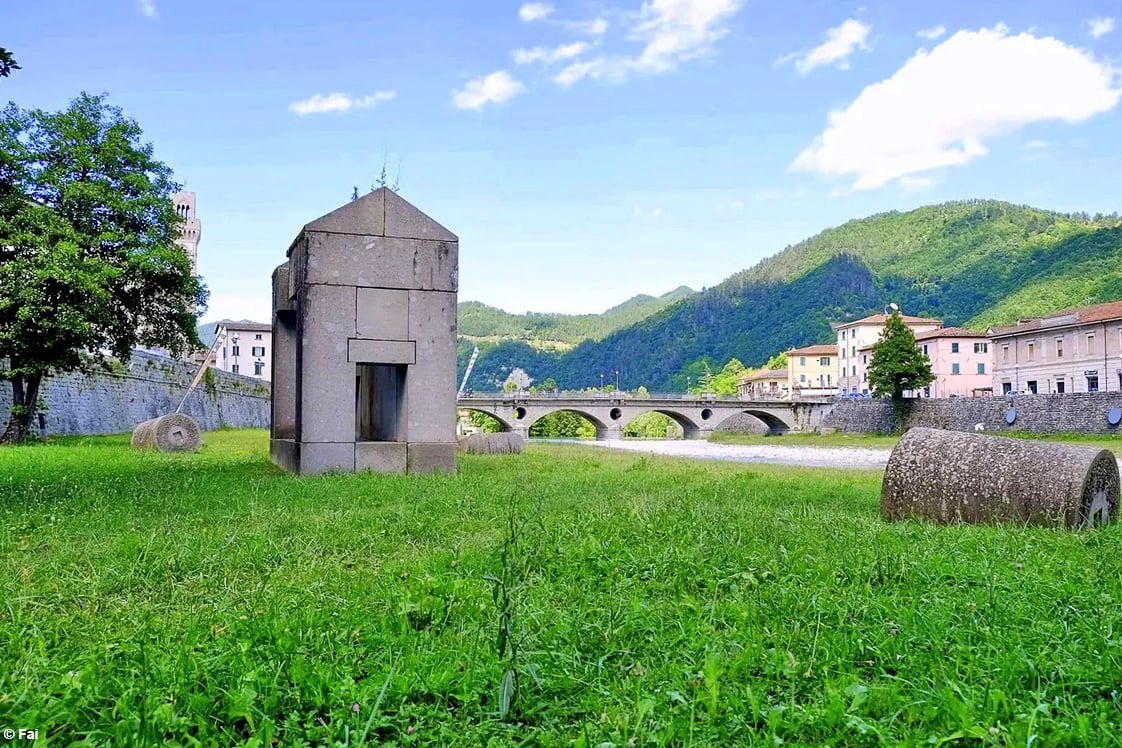
Portico di Romagna: not just a town of cribs
During the Christmas season, the medieval village of Portico di Romagna is transformed into a charming Christmas wonderland with its exhibition of nativity scenes. These scenes are beautifully scattered throughout the most picturesque parts of the village – from house facades and staircases to windowsills, benches and even tree trunks – creating one of the most popular Christmas events in the region.
But not everyone is aware of Portico’s deep historical ties to Dante’s Tuscany. Formerly part of the province of Florence until 1923, legend has it that it was here that Dante Alighieri first fell in love with Beatrice Portinari.
Nearby, you’ll find the path that leads to the Acquacheta waterfalls, one of the largest in the northern Apennines and made famous by Dante in Canto XVI of the Inferno.
It’s a destination that offers both literary and natural beauty, making it a truly enriching experience for visitors.
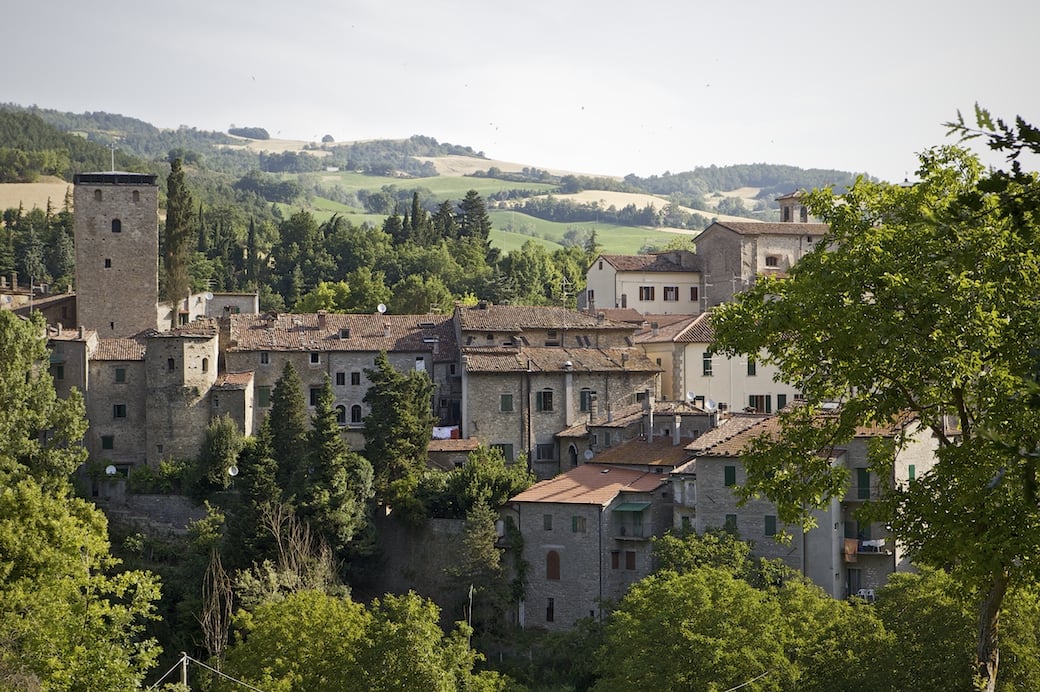
Monte Falco: the highest peak in the Park
For hikers, the climb to Monte Falco, the highest peak in the park at 1,658 metres, is a must. The “Roof of the Apennines” hike starts in Campigna, a small village in the Santa Sofia area, and crosses the Passo della Calla. In about 1 hour and 40 minutes, covering just over 4 kilometres and climbing 350 metres, you’ll reach the summit with its breathtaking panoramic views.
If you’re feeling more adventurous, you can continue on to Monte Falterona, the second highest peak in the park at 1,654 metres, on the Tuscan side.
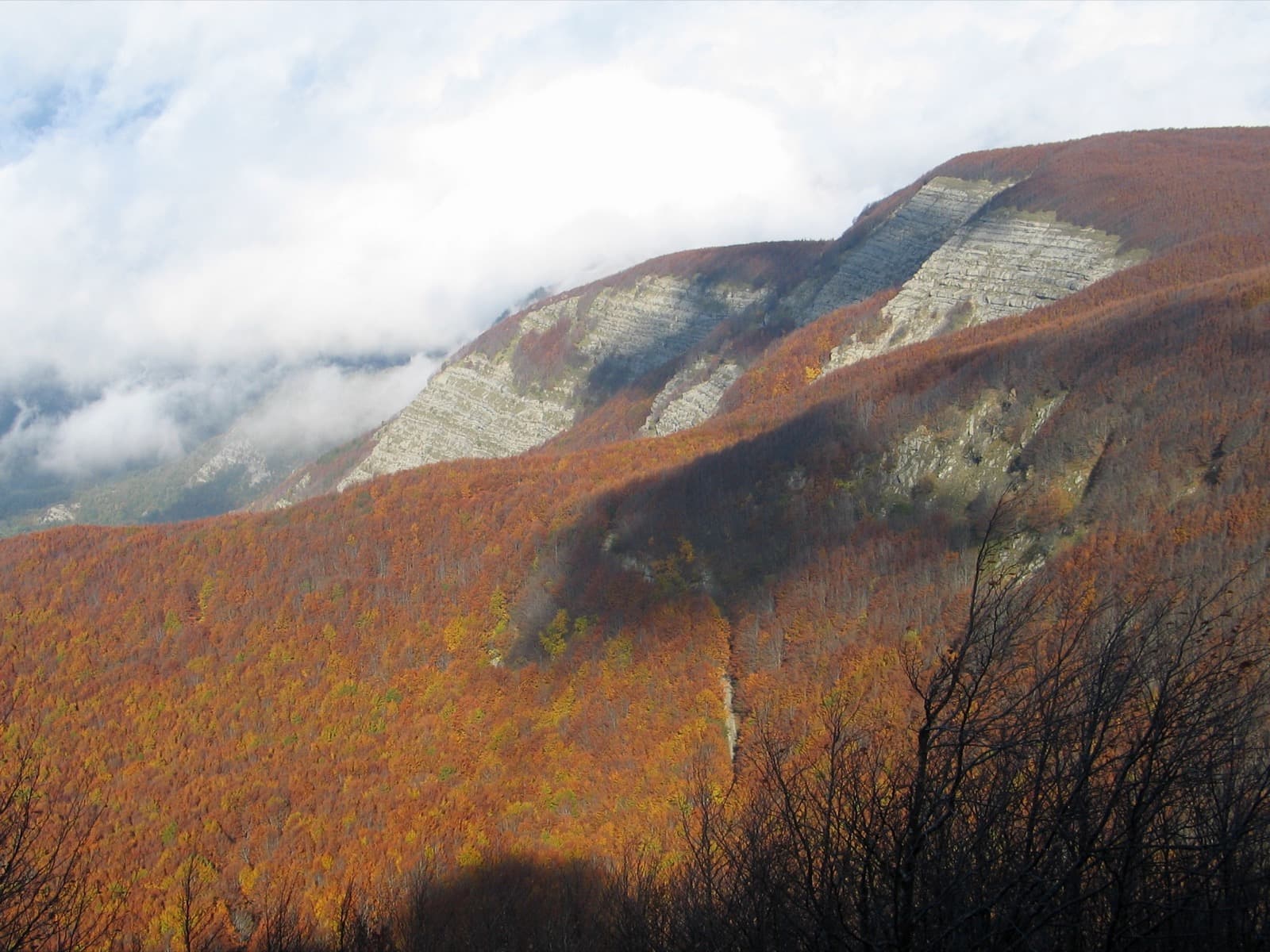
Author
You may also like
5 hikes to discover the Casentinesi Forests on foot
by Elisa Mazzini /// October 19, 2020

Interested in our newsletter?
Every first of the month, an email (in Italian) with selected contents and upcoming events.
Open air gallery: the Santa Sofia Sculpture Park
by Davide Marino /// October 30, 2020
